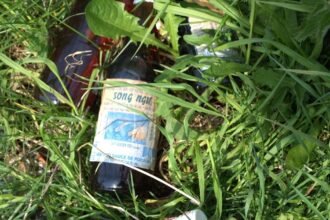The crystal-clear waters of Okanagan Lake sparkle under the summer sun, but the usual bustle of tourists along Kelowna’s waterfront is noticeably subdued this season. Local business owners across the Okanagan Valley are raising alarm bells as visitor numbers have plummeted in what should be the peak of their annual tourism cycle, creating ripple effects throughout the region’s economy.
“We’re down about 30 percent compared to last year,” says Miranda Johnson, who operates a boutique winery tour service in Oliver. “Usually by mid-July, we’re fully booked weeks in advance. Now we’re seeing last-minute availability almost every day.” Johnson’s experience isn’t isolated—it reflects a troubling pattern affecting businesses throughout British Columbia’s premier vacation destination.
Multiple factors appear to be contributing to this unexpected tourism drought. Lingering economic uncertainty has tightened vacation budgets for many Canadian families, with discretionary spending taking a hit as households prioritize essentials. The high cost of accommodations in the region, which has seen significant price increases over the past two years, has further deterred potential visitors.
Weather patterns have also played a significant role. An unusually wet spring delayed the start of the traditional summer season, and recent climate concerns have left potential tourists uncertain about planning extended stays. Some are choosing alternative destinations with more predictable conditions.
The Okanagan Hotel Association reports occupancy rates are down approximately 18 percent compared to 2023 figures, representing millions in lost revenue across the sector. “This isn’t just a minor fluctuation,” explains Association President Thomas Chen. “These numbers represent a significant shift in tourism patterns that demands our attention.”
Local restaurants and retail establishments are feeling the impact most acutely. “Summer tourism typically generates about 60 percent of our annual revenue,” notes Elena Petrov, who operates a lakeside café in Penticton. “If this trend continues, we’ll have to make difficult decisions about staffing levels heading into fall.”
Canadian tourism experts point to changing travel patterns post-pandemic as another contributing factor. International travelers, particularly from key markets like China and Europe, haven’t returned to pre-pandemic levels. Meanwhile, many Canadians who accumulated savings during lockdown periods have already satisfied their pent-up travel demands or are choosing international destinations after years of domestic travel.
Municipal leaders across the Okanagan are now scrambling to address the situation. The Kelowna City Council recently approved emergency funding for additional marketing efforts aimed at attracting last-minute travelers from nearby urban centers like Vancouver and Calgary. Thompson Okanagan Tourism Association has launched a digital campaign highlighting unique experiences and value-focused packages.
“We need to adapt quickly,” says Regional Tourism Director Anita Sharma. “The Okanagan has always been resilient, but this requires coordinated action from both the private and public sectors.” Sharma’s team is working with local business owners to develop incentives that might attract visitors during this critical period.
Some entrepreneurs are finding creative solutions. Several wineries have introduced mid-week specials and enhanced tasting experiences. Adventure tourism operators are bundling services to offer better value, and some hotels have relaxed cancellation policies to encourage bookings.
Provincial officials are monitoring the situation closely, conscious that tourism represents over $20 billion annually to British Columbia’s economy. While the Okanagan’s challenges are particularly acute, similar patterns are emerging in other tourism-dependent regions across the province.
As stakeholders work to address immediate concerns, larger questions loom about the future of tourism in regions highly dependent on seasonal visitors. Will this summer represent a temporary anomaly or the beginning of a more permanent shift in how and where people choose to vacation? For the thousands of Okanagan residents whose livelihoods depend on tourism, finding the answer to this question has never been more urgent.










